![]() Phoenix, Arizona: 602-932-1623
Phoenix, Arizona: 602-932-1623
![]() Phoenix, Arizona: 602-833-1185
Phoenix, Arizona: 602-833-1185

July 2, 2021
When you drive through a neighborhood with homes of various ages, you might notice many types of pitched roof. If you have ever wondered about a pitched roof vs gable roof, or why people choose a sloping roof over another type, you’re not alone. Each roof design has its own advantages and potential problems. At Diversified Roofing, we believe it’s a smart idea to understand what pros think of the one you have so that you can make the best roofing material and upkeep choices for your home.
If you look at 10 homes built throughout the 20th Century, you might find 10 different types of pitched roof. Take a moment to learn about each one, so that you can understand how yours protects your home (and sometimes puts it at risk).
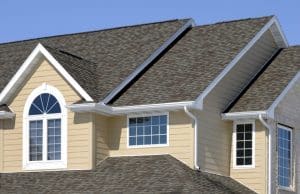
A significant portion of modern homes have a gable roof, so much so that people sometimes think that pitched roof vs gable roof is an apples-to-apples comparison. In fact, a gable roof is one of many types of pitched roof. With this style, you have two sides to the roof that run down opposite sides of the home. They usually extend a bit beyond the structure. This design is great for allowing water to run off, but faulty designs and installation can ruin the roof in high winds.
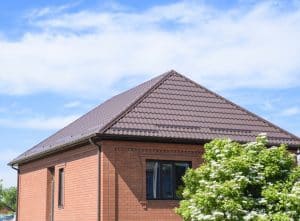
You’ve probably seen tons of homes with a hip roof style. This design has a ridge at the top and runs down all four sides of the home. Homeowners like it because it’s less likely to sustain damage than a gable roof, since the wind and water can simply glide down any side. On the other hand, it’s more expensive to install. It’s also tricky to place. If you don’t know how to choose a roofing contractor, you may end up with a company that doesn’t properly protect the valleys that are a common feature of this style.
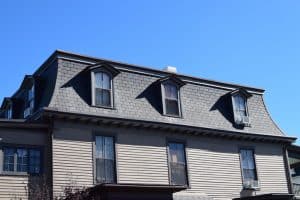
A Mansard roof is fairly easy to understand. Take a hip roof, and add a second slope on each side. Mansards are popular because they make it relatively easy to make changes to your home over time. If you’re not sure whether you want a second story or other addition that extends your home upward, a Mansard roof gives you more flexibility. However, the upper slope of the roof is fairly low. In areas with a lot of rain or flying debris, the excess weight can damage the roof.
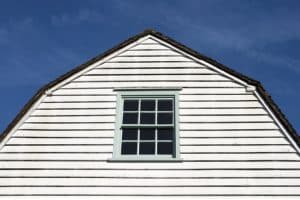
If a Mansard roof is a little like a hip roof, then a Gambrel roof is the same basic concept on a gable roof. You see Gambrel roofing styles on barns, which makes them a popular feature on the trendy barndominium. Homeowners like this style because it dramatically increases the available space of the upper story. There are a few drawbacks, however. A Gambrel roof is like a gable roof in that high winds can tear off material, or even separate the roof from the rest of the home. It also doesn’t support excess weight very well.
A sloping roof has a lot of names–shed roof, lean-to, or Skillion. This type of roof has only one side, and usually a pretty sharp pitch. The upside is that it looks very trendy and often costs less to install. With no valleys or multiple sides, pros can minimize the amount of material needed. The downside is that the high slope can be risky in high-wind areas. If the pitch is too high, the ceiling might also be too low on one side.
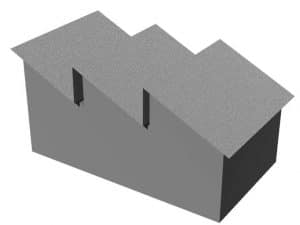
A sawtooth roof was an early 19th Century roof design that allowed natural lighting to come in from high windows. The roof has two slopes that run parallel to each other, not unlike the teeth of a saw. It’s popular for homes since the mid-20th Century for its unusual style and ability to provide extra space. If you want to draw in natural light from the south or west, it’s a great option. On the other hand, it’s complicated to install and even harder to maintain.
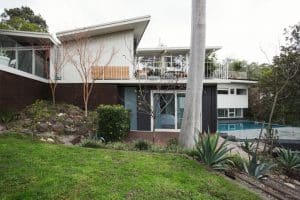
The butterfly roof is basically a reverse of the sawtooth. With this design, the roof has two slopes that run down from two opposing sides, creating a cascading effect toward the center of the home. Since these walls are taller than the rest of the home, there is more room for windows. People building an eco-friendly home can use the valley for water collection. But given its design, it’s hard to install and can get damaged easily, especially without regular upkeep.
A curved roof is more common for hay barns, but you’ll find them on homes on occasion. This style is just as it sounds. Instead of a single slope, the roof follows one curving line from one side to the other. In some cases, the roof may have the shape of a dome. If it has a relatively low slope, it can handle winds and rain without too much difficulty. However, homeowners have a relatively limited selection of materials, and they will probably cost more to install and maintain.
Working on any type of pitched roof is a significantly different experience than working with a flat roof. Homes that have a flat roof usually provide a level surface that is easier for people to reach and walk on safely, without fear of falling. For any pitched roof, anyone who plans to go up to the roof must know where to step without damaging the material or putting themselves at risk of falling. Safety is even harder to guarantee when the roof is wet or covered in debris. That’s why we at Diversified Roofing always recommend consulting a professional, especially when you’re considering roof repair vs. roof replacement. Your safety is always worth the investment.
The best materials for your pitched roof depend on the type and your budget. The good news is that you don’t have to make a decision on your own. When you contact us to schedule a free estimate, we can help you determine which options will work best for your roof type.